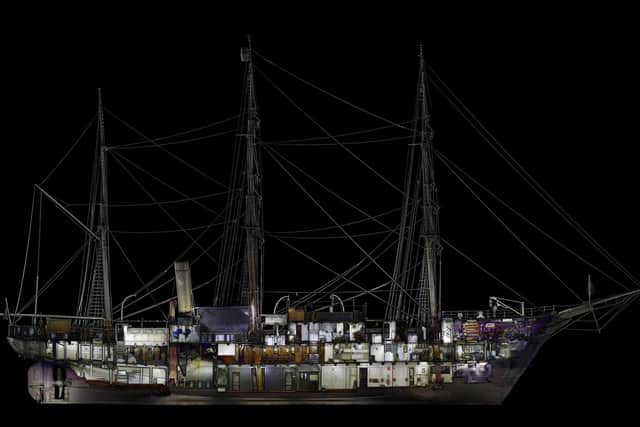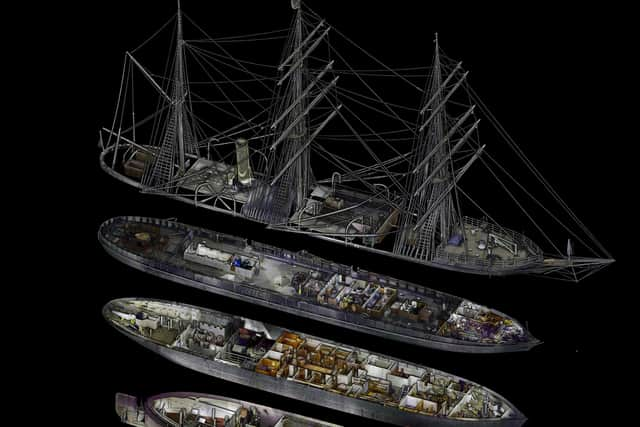RSS Discovery: Shackleton's famous Scottish ship explored like never before as 'digital twin' created
The Scottish ship that first took Scott and Shackleton to the Antarctic can be explored like never before following the creation of a “digital twin” of the historic vessel.
RSS Discovery was built in Dundee in 1901 and took Shackleton and fellow explorer Robert Falcon Scott to ice-packed Antarctica on the first official British exploration of the region for 60 years.
Advertisement
Hide AdAdvertisement
Hide AdThe vessel, the first purpose-built ship of its kind designed for scientific research, allowed the team to head deep into what was then largely an untouched continent to record discoveries such as the Cape Crozier emperor penguin colony, the Antarctic plateau – where the South Pole is located – and many new marine species.


Now the most detailed and accurate 3D recreation of the Discovery has been made by a team from the University of Southampton with new insights revealing how the ship was built and used. The project will to inform vital restoration work on the vessel.
Dr Michael Grant, from Coastal and Offshore Archaeological Research Services at the University of Southampton, said: “This digital twin provides an amazing opportunity for more people to explore this fascinating ship and learn about its history in a completely new way, including areas of the ship that cannot be accessed by the public."
Historic objects associated with the Discovery’s Antarctic expeditions between 1901 and 1931 find themselves back in their place on the boat after a raft of work was undertaken to create 3D scans of the items. A dispersed collection of relics, scientific samples and documents has been brought together once again.
Advertisement
Hide AdAdvertisement
Hide Ad

Dr Felix Pedrotti, from the Southampton Marine and Maritime Institute at the University of Southampton, said: “With the rise of new technologies, such as laser scanners and UAVs, we can now create highly accurate digital twins. These digital replicas offer invaluable insights into the RRS Discovery, including its structures and layouts.”
As well as Scott and Shackleton, the 1901 expedition launched the careers of some of the leading figures in what became known as the ‘Heroic Age of Antarctic Exploration’, including Edward Wilson, Frank Wild, Tom Crean and William Lashly.
The RRS Discovery is the sole surviving UK ship from the revered period, which lasted between the end of the 19th century and the Shackleton–Rowett Expedition of 1921–1922.


The ship returned to Dundee in 1986, with the vessel now serving as a visitor attraction drawing 80,000 people a year under the stewardship of Dundee Heritage Trust (DHT).
Advertisement
Hide AdAdvertisement
Hide AdThe project provides essential information for DHT team as it progresses the restoration of the ship. The age of this ship means that conservation is a necessary ongoing process, with the ship deteriorating in multiple areas, including parts of the internal hull, bow and propeller shaft. A £1.4 million grant from the National Heritage Memorial Fund will pay for the first phase of the Discovery’s full restoration.
Mel Ruth Oakley, curator at DHT, said: “The opportunity to take part in this project is invaluable to Dundee Heritage Trust. As we embark on a major conservation project, this digital scan of the ship will provide us with a detailed record of the ship before the work. This is incredibly helpful in determining the conservation work we undertake.”
Comments
Want to join the conversation? Please or to comment on this article.
